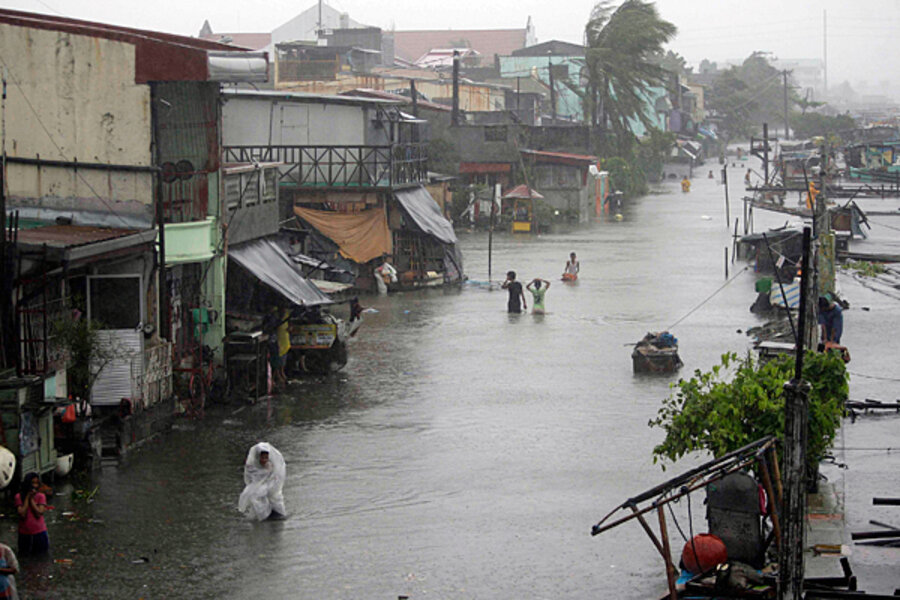Typhoon Nesat puts Philippines capital underwater
- A roundup of global reports
Typhoon Nesat put most of the Philippines capital city of Manila and much of the main island of Luzon underwater Tuesday as it passed over the archipelago nation with more than 100 mile per hour winds.
At least 12 people have been reported dead – some from drowning, others from injuries incurred from storm damage. According to CNN, more than 64,000 people have been affected. National police and relief agencies are scrambling to hand out supplies, rescue those in need, and otherwise aid evacuees, reports the Philippine Star.
Seasonal monsoon rains had already saturated the ground with rain before the typhoon hit, meaning any rain from the typhoon became runoff and potential floodwater because it had nowhere to go. On top of that, the high winds sent storm surges into the coastal city, despite embankments – which then prevented the water from flowing back out, the Associated Press reports.
More than 100,000 people across the country were ordered to evacuate their homes in areas known for being prone to flooding.
The BBC deems Nesat the largest typhoon this year. The Philippines geography makes it a "welcome mat" for about 20 storms and typhoons a year, according to the Associated Press. In 2009, nearly 500 people were killed when a cyclone dumped a month's worth of rainfall in 12 hours. Typhoon Nesat, in contrast, dumped about half the amount of rain.
BBC reports that the typhoon forced the closure of the US embassy and the Philippine stock exchange and also flooded the ground floor of the city's main hospital.
Authorities are concerned about widespread crop damage in central Luzon's rice and corn growing regions, Reuters reports. As much as 15 to 20 percent of rice crops in Isabela province, where the typhoon made landfall, could be damaged, the provincial governor said. The Cagayan Valley region, which includes Isabela, was expected to make up 8.4 percent of the national rice crop in the third quarter and 10.5 percent in the fourth quarter.
While the storm has mostly passed, authorities are keeping a close eye on communities at the base of the Mayon volcano, southeast of Manila. A 2006 typhoon caused mudslides that buried villages and killed or left missing 1,600 people, the Associated Press reports.





